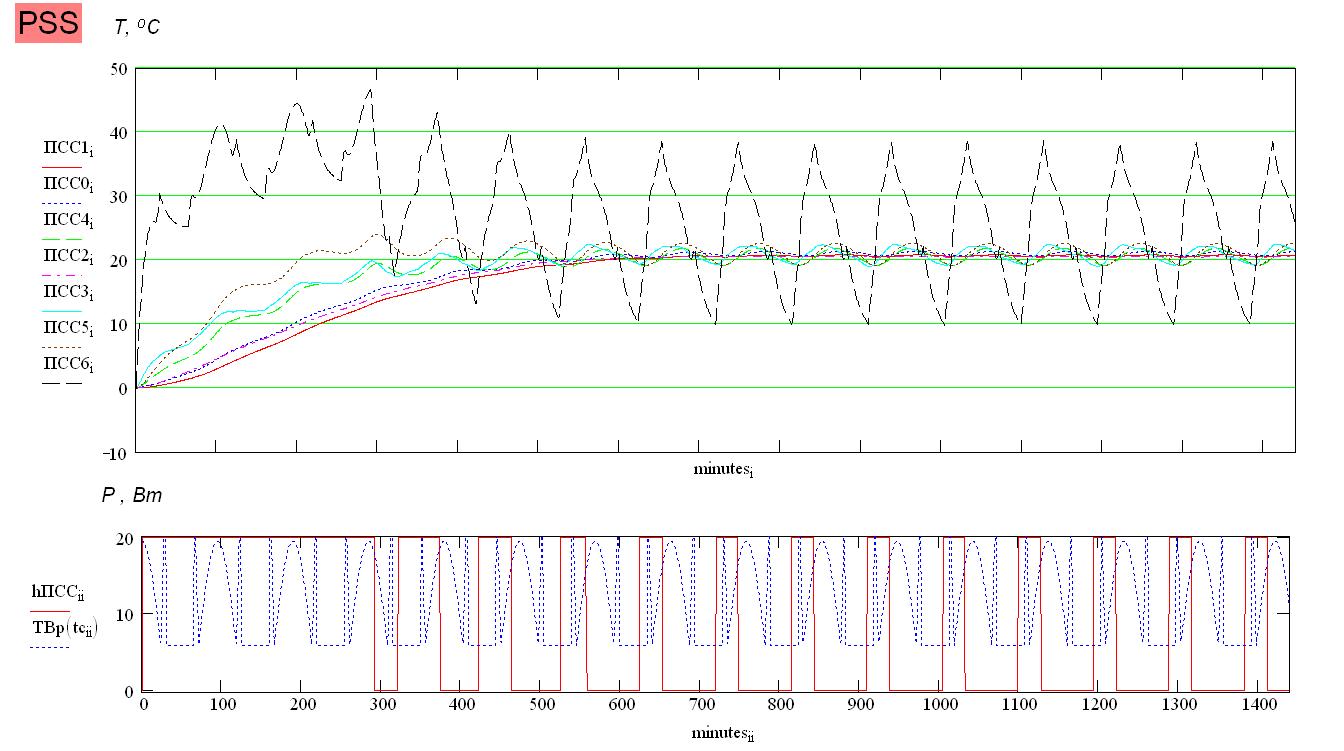|
SPECIFIC FEATURES OF MATHEMATICAL AND EXPERIMENTAL MODELING OF THE COMBINED HEAT TRANSFER IN THE APPARATUES OF REMOTE PROBING OF THE EARTH
Numerical calculation of the basic elements of the thermal regime provision system (TRPS) for the target –oriented equipment (TOE) of spacecraft (SC) for remote probing of the Earth BelKA is provided. It was contemplated to create TOE as an autonomous mono block with its own TRPS, connected with SC only by informational and power channels.
During the selection of basic scheme of the thermal regulation system it was necessary to take into account the requirements of the provision of the reliability of TOE, according to which the temperature drop over the basic elements of optical systems must not exceed ±2oC with consideration for changes in the ambient radiation situation and at different initial and boundary-value conditions that determine the complex radiative-conductive heat transfer in the elements of the TRPS of the TOE.
Method of lumped parameters is used at calculations of the thermal processes in spacecraft. General view of SC and TOE
1. THE BASIC DIAGRAM OF TRPS AND THERMAL REGIMES OF TOE
The target-oriented equipment BelKA is an autonomous mono block that includes two optical digital devices assembled on a frame for remote probing of the Earth (panchromatic survey system (PSS) and multi zonal survey system (MZSS), two electronic blocks of focal plane (one for each optical device) and an on board information system (BIS). The mono block has an autonomous thermal regime provision. TRPS is intended for removal of the excess of heat releasing during on-board equipment operation for keeping temperature variation of TOE elements in permitted limits and for compensation of heat losses through the open apertures of the optical devices and providing permanent and homogenous temperature of the latter within indicated above rather rigid limits (±2oC). The principle of TRPS operation is based on sustaining of the thermal balance averaged by orbital period of SC revolution for each basic elements of the TOE by releasing excess heat through the radiators and apertures. The deficit of heat when the operation of the radiator causes superfluous cooling of the element is compensated with regulated heaters (they are light-brown at the fig.).
SC scheme for the TRPS was suggested and realized in which to decrease energy consumption by the heaters the possibility was used of smoothing the peak heat loads during the operation of electronic blocks at the expense of the thermal accumulating ability of the massive electronic blocks of the focal plane due to their heat capacity.

For a compensation of heat losses through apertures and for maintaining of a more homogenous temperature of the most cooled optic elements (disposed near the apertures) there are thermal buffers near them. Thermal buffers are devices similar to blends with controlled heaters on them. The choice of the blends’ sizes as well as the quantity, location and power of the heaters, installation of controlling probes was the subject of modeling of heat exchange in the BelKA equipment.

HRPS principle scheme AA mono block Location of five HRPS controlling sets is shown (1) – heater, thermal probe and controller: at aperture, on frame and on AA BFP; three thermal separations (2): between electronic blocks BFP (3) and optical devices (4), between frame (5) and BIS (6); three HRPS radiators (7) and heat pipes (8)
2. SPECIFIC FEATURES OF THE MATHEMATICAL MODEL OF THERMAL PROCESSES IN THE MONO BLOCK OF THE TOE
To calculate the thermal processes and optimize TRPS of TOE structure on the basis of the method of lumped parameters a mathematical model of thermal processes in the TOE mono block has been developed.
3. RESULTS OF MATHEMATICAL SIMULATION OF THERMAL PROCESSES IN THE TOE MONO BLOCK
At a preliminary stage of modeling, thermal calculations with different variants for the TOE mono block constructive realization were conducted on the basis of which the optimal TRPS elements constructive parameters were determined. After this, when the mono block construction was finally formed, the numerical simulation of the thermal regimes in different conditions of testing of the mathematic model for balance as well orbital flight orientation was performed.

Emergency of the thermal regime to a stable state after a “cold” start. The temperature of the PSS module elements. On the lower diagram there is the cycle diagram of TRPS heaters, PSS thermal buffer and external flow in aperture (flow minimum corresponds to shadow period)

The first 8 circuits of flight with a series of working seances beginning from the stable regime with a cold SC body. The temperature of PSS module optical elements. The working regime, inertial orientation , 8 circuits in a stable regime , SC body temperature TSA = -10oC.
The thermal calculations on the basis of the presented model and their comparison with the results of ground tests have shown that the accepted scheme of thermal regulation and chosen constructive parameters provide a possibility of satisfying the technical requirements for the thermal regime providing in the module orbit of target-oriented equipment for spacecraft of remote probing of the Earth BelKA.

Rotable screen-imitator of terrestrial thermal radiation towards to the aperture orifice of the TOE optical devices and cryogenic (fixed) screen for the open space radiation imitation
To attain successful ground experimental adjustment of the on-board optical-electronic apparatus “BelKA”, the possibility of modeling in the barochamber with the aid of prepared imitators, the different regular and extreme regimes of thermal vacuum test corresponding to the orbital flight conditions was verified. The sum test time composes from 96 min (one circuit) to several days.

Experimental (solid lines) and calculated (thin lines) cycle diagrams of “BelKA” orbital flight conditions thermal imitators (two circles, survey regime)
The developed apparatus reproduces with high accuracy the natural laws of change in the characteristic temperature, turning angles, corresponding to the orbital flight conditions of “BelKA” and on-board TOE exploitation. Negligible difference was observed only for the temperature of rotable screen at deflection angles close to ±90o.
|